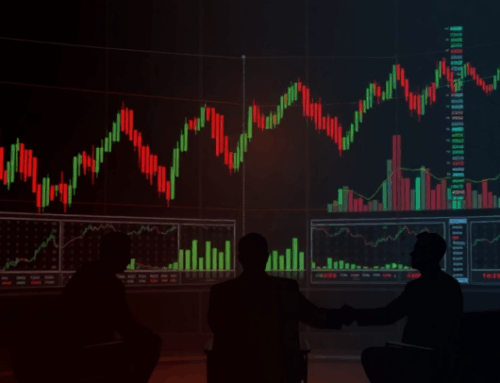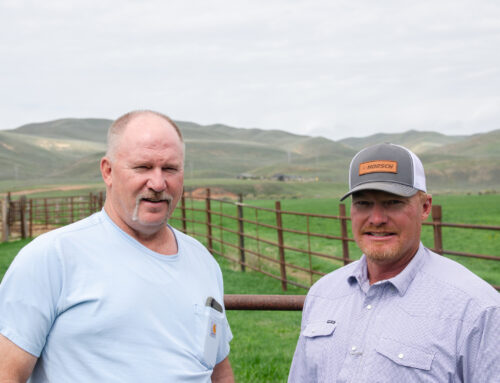Why would an energy company remove its dams? – TPR: The Public’s Radio
May 27, 2025
Megan Hall: Welcome to Possibly, where we take on huge problems like the future of our planet and break them down into small questions with unexpected answers. I’m Megan Hall.
Here at Possibly, we usually talk about how dams create clean, renewable electricity, but today we’re reporting on why, sometimes, it makes sense to take them down. To do that, we’re traveling near the border between Oregon and California, to the Klamath River.
Emma Mejia and Iman Khanbhai from our Possibly team have the details.
Emma Mejia: Hi, Megan!
Iman Khanbhai: Hello!
Megan Hall: So why would you remove dams? Aren’t they a good source of renewable energy?
Emma Mejia: Before I answer that question, let’s take a step back and talk about where these dams were on.
Iman Khanbhai: The Klamath River is massive. It’s more than 250 miles long and runs through Oregon and Washington. At one point, it had one of the biggest migrating salmon populations in the world.
Emma Mejia: It’s also an important cultural and economic resource for a lot of Native American tribes that live nearby.
Megan Hall: Tell me about the dams.
Iman Khanbhai: A utility company built six of them along the river. Some of them were more than a hundred years old.
Emma Mejia: The dams generated electricity, but they also caused problems by blocking the natural river flow, which affected the communities and ecosystems in the region.
Iman Khanbhai: And by the early 2000s, local tribes and environmentalists saw a major die-off of the river’s salmon population.
Megan Hall: Why were the salmon dying?
Emma Mejia: To find out, we called up an expert.
John Sabo: I’m John Sabo. I’m the director of the ByWater Institute for Climate Adaptation at Tulane University.
Iman Khanbhai: He says–
John Sabo: The first and primary impact is blockage of migratory routes.
Megan Hall: What does that mean?
Emma Mejia: Salmon are born in rivers and streams. When they get older, they swim to the ocean, where they spend a lot of their adult life.
Iman Khanbhai: When they’re ready to reproduce, they make a trip up the same river to where they were born, to lay their eggs.
Emma: Mejia: As you can imagine having huge dams blocking this path was making the trip a lot more difficult.
Iman Khanbhai: Which was devastating for their populations.
John Sabo: If you want to have a healthy salmon run, you need a lot of river.
Emma Mejia: Rivers dams also can increase water temperature, and lead to algae blooms which sucks oxygen out of the water. That isn’t great for salmon and the overall health of the river.
Iman Khanbhai: So, because of all of these issues, tribes and environmentalists have spent decades fighting to remove these dams.
Emma Mejia: Eventually, four of the dams were removed.
Megan Hall: Got it. But why did the utility company that owned them, allow this?
Emma Mejia: Well, The dams only produced about 2 percent of the utility company’s total electricity.
Iman Khanbhai: Also, they couldn’t relicense the dams without fixing them to meet current environmental standards.
Emma Mejia: So they crunched the numbers and realized it would be cheaper to remove the dams.
Iman Khanbhai: As John puts it…
John Sabo: It kind of was a perfect storm. There was not only a lot of enthusiasm, both from the tribes on the cultural side and also on the ecological side, from environmental organizations and the government. The policy and economics made sense too.
Megan Hall: So was everyone happy with the decision?
Emma Mejia: Not totally. There were some people living near the river who were worried about what dam removal would mean for their communities.
Iman Khanbhai: People were worried about losing recreational areas. And it sparked some debates about water rights.
Emma Mejia: There are always trade-offs after any environmental project.
Megan Hall: Well, it’s been about a year since the last dam was removed, what does the landscape look like now?
Iman Khanbhai: It’s going to take a while to see the full benefits of the dam removals.
Emma Mejia: In terms of the salmon, there’s been mixed results. Initial counts show a fluctuation in the populations. Scientist predict it will take a few decades for the salmon run to return to its full glory.
Megan Hall: What about renewable energy? How is that gonna be replaced?
Iman Khanbhai: The utility company that operated the dams hasn’t said exactly how they’re replacing the power. But they have announced plans to build a lot more wind and solar over the next decade.
Megan Hall: Great! Thanks, Emma and Iman!
That’s it for today. You can find more information, or ask a question about the way your choices affect our planet, at askpossibly.org. You can also subscribe to Possibly wherever you get your podcasts or follow us on Instagram, Facebook, LinkedIn, X, or Bluesky at “askpossibly”
Possibly is a co-production of Brown University’s Institute for Environment and Society, Brown’s Climate Solutions Initiative, and the Public’s Radio.
Search
RECENT PRESS RELEASES
Related Post



